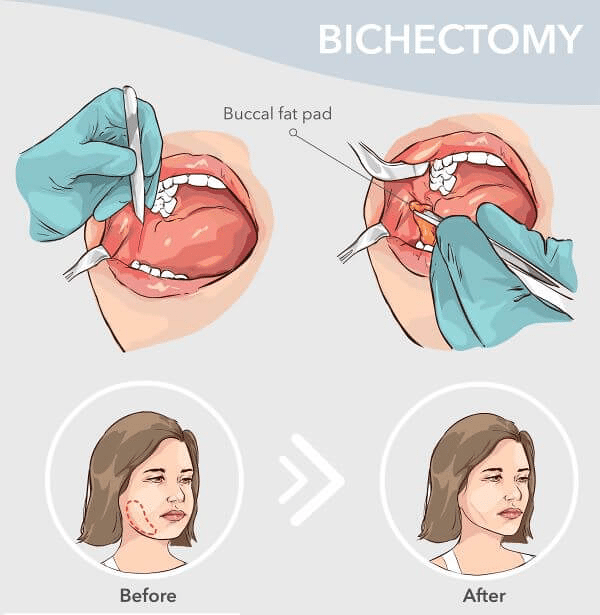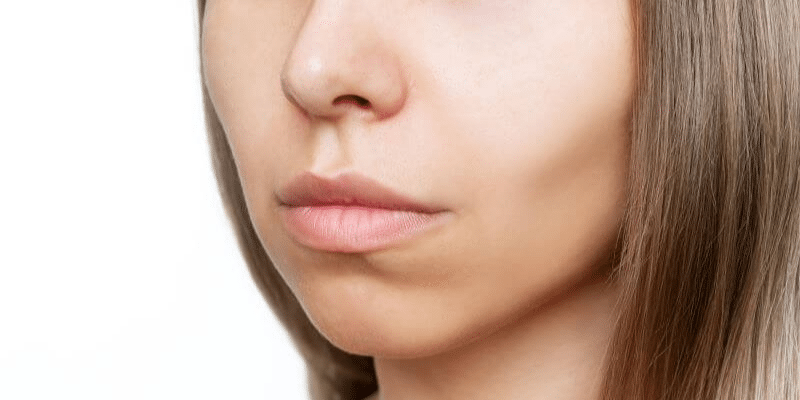Buccal Fat Removal - Cheek Contour Enhancement or Dangerous Trend?
Getting a bichectomy – more commonly known as buccal fat removal – is currently more popular than almost any other cosmetic surgery trend. Thanks to social media in particular, our appearances are judged more intensely today than ever before. And with the modern procedures of plastic surgery that are available today, anyone who feels unhappy with the way they look can alter it in order to feel more comfortable in their own skin again. Buccal fat removal is just one example, where patients hope to achieve a 'supermodel' look with a buccal fat removal – celebrities like Bella Hadid come to mind – by narrowing the cheek area and creating striking contours in the face.
But while cosmetic surgery can significantly improve one's quality of life by boosting confidence, the emergence of procedures as beauty trends like bichectomia should be scrutinised more closely. In the following article, we explain in more detail how the procedure works, what risks are involved and look over the average buccal fat removal cost.
What Is Buccal Fat Removal?
Chubby cheeks are out; sharp cheek contours are in: buccal fat removal gets rid of the naturally occurring fat pad between the cheekbone and jawline for a more defined look. The reason? More and more (especially young) women see a V-shaped face as attractive and want to narrow their face through surgery.
While everyone has buccal fat, not everyone has the same amount. For example, people with naturally narrow faces and more prominent cheekbones have less of it than someone with a full face. This fact also answers the question of who is eligible for buccal fat removal: people who have a particularly high level of fat in the area are best suited.
Why Do We Have Buccal Fat at All?
Buccal fat serves mainly supportive purposes, lining the deep tissue spaces in the cheek area thereby ensuring a better gliding of the interacting muscles during chewing. It serves as a kind of cushion to protect the delicate facial muscles from external influences.
How Does a Bichectomy Work?
The buccal fat is removed surgically when the doctor makes a small incision on the inside of your cheeks and removes the fat pad above it. After the buccal fat is removed, the incision is closed with self-dissolving sutures.
Either a local or full anaesthetic is used. Before the treatment, the doctor will explain the most suitable method. As a buccal fat removal is minimally invasive, the procedure only takes about 30 - 45 minutes and does not involve a long recovery time. Slight swelling and bruising are normal but subside after just a few days.

Buccal Fat Removal: Celebrities Under the Knife
As is often the case, the beauty trend originates from Hollywood, where treatments like buccal fat removal always find patients who want to 'optimise' the appearance around their eyes. Since then, the treatment for making cheekbones visible has spread rapidly via social media like TikTok. There, the trend was picked up by influencers, who in turn brought it to the attention of millions.
But which celebrities have actually embraced the procedure? Not many. Model Chrissy Teigen is so far the only one to openly admit to having had buccal fat removal surgery in 2021. However, the list of stars who have most likely gone under the knife according to plastic surgeons is much longer: Bella Hadid, Zoe Kravitz, Khloe Kardashian and Cardi B are just some of the big names.
What Are the Risks of Buccal Fat Removal?
Although a buccal fat removal is relatively low-risk, complications cannot be ruled out. These include:
Infections
Bleeding
Swelling
Wound healing problems
Removal of an excessive amount of fat, which can lead to dimpling of the cheeks
Nevertheless, the real risks of the procedure do not lie in the treatment, but in the effects in later years. While at the age of 25 there is still enough fat in the face to make it look young and plump, the natural fat content gradually decreases with age. If this buccal volume is missing after a removal, patients often look older than they are – in the worst case, they even look really 'sunken'.
Since the procedure is irreversible, only fillers or an autologous fat transplant can be considered later to fill in the cheeks that appear too hollow. For this reason, young patients in particular should be well informed about buccal fat removal and its effects in advance.
How Much Can a Bichectomy Cost?
As the beauty trend is currently enjoying great popularity, the procedure is offered by many doctors and clinics. However, your buccal fat removal cost depends largely on the place of treatment and the specialist chosen. In general, however, patients should expect bichectomy costs of around €1,800 - €3,000.
How Long Do the Results of a Buccal Fat Removal last?
The procedure is permanent. That is, having given your jawline buccal fat removal, 10 years later it should stilll not have re-formed. However, if you gain a large amount of weight over time, your face may appear fuller again. This is not due to the buccal fat pad, but to your weight in general.
Sources:
American Society of Plastic Surgeons: 'Buccal Fat Removal'. Last accessed on 13.07.2023
De Lima Stevao (2015): 'Bichectomy or Bichatectomy - A Small and Simple Intraoral Surgical Procedure with Great Facial Results'. Last accessed on 13.07.2023
Zhang et al. (2002): 'Anatomical structure of the buccal fat pad and its clinical adaptations'. Last accessed on 13.07.2023

Patient manager
Frieda
Your personal Patient Manager
Let's talk
Still unsure? Feeling overwhelmed? Talking to a real person can give you the guidance and reassurance needed. You don’t have to do it alone. Let’s find the right doctor together.
